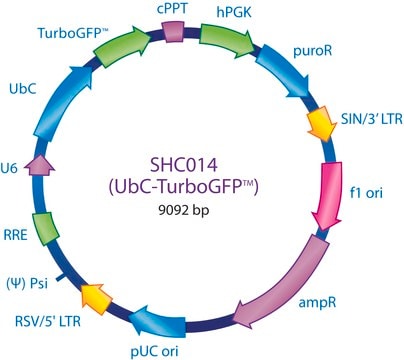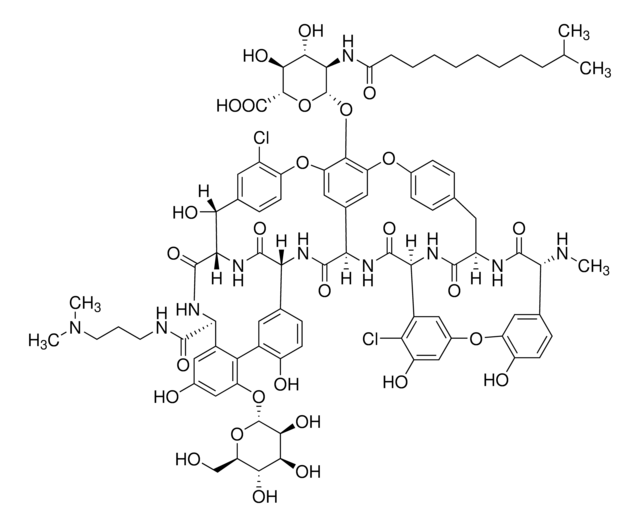SHC012V
MISSION® pLKO.1-puro-CMV-TagRFP™ Positive Control Transduction Particles
Contains a gene encoding TagRFP
Synonim(y):
MISSION®, MISSION® Control Transduction Particles
About This Item
Polecane produkty
linia produktu
MISSION®
stężenie
≥1x106 VP/ml (via p24 assay)
metody
capture ELISA: 106 TU/mL using p24
Warunki transportu
dry ice
temp. przechowywania
−70°C
Szukasz podobnych produktów? Odwiedź Przewodnik dotyczący porównywania produktów
Powiązane kategorie
Opis ogólny
To see more application data, protocols, vector maps visit sigma.com/shrna.
Zastosowanie
This construct aids in interpretation of experimental design and results by providing a red fluorescent protein marker for monitoring success in transduction of your cells of interest.
Informacje prawne
polecane
Kod klasy składowania
12 - Non Combustible Liquids
Klasa zagrożenia wodnego (WGK)
WGK 3
Temperatura zapłonu (°F)
Not applicable
Temperatura zapłonu (°C)
Not applicable
Certyfikaty analizy (CoA)
Poszukaj Certyfikaty analizy (CoA), wpisując numer partii/serii produktów. Numery serii i partii można znaleźć na etykiecie produktu po słowach „seria” lub „partia”.
Masz już ten produkt?
Dokumenty związane z niedawno zakupionymi produktami zostały zamieszczone w Bibliotece dokumentów.
Nasz zespół naukowców ma doświadczenie we wszystkich obszarach badań, w tym w naukach przyrodniczych, materiałoznawstwie, syntezie chemicznej, chromatografii, analityce i wielu innych dziedzinach.
Skontaktuj się z zespołem ds. pomocy technicznej






